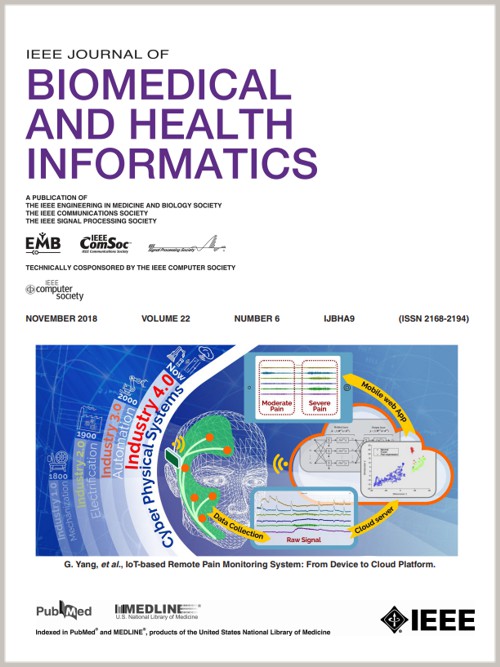Facial Expression Recognition for Healthcare Monitoring Systems Using Neural Random Forest
IF 6.7
2区 医学
Q1 COMPUTER SCIENCE, INFORMATION SYSTEMS
IEEE Journal of Biomedical and Health Informatics
Pub Date : 2024-10-16
DOI:10.1109/JBHI.2024.3482450
引用次数: 0
Abstract
Facial expressions vary with different health conditions, making a facial expression recognition (FER) system valuable within a healthcare framework. Achieving accurate recognition of facial expressions is a considerable challenge due to the difficulty in capturing subtle features. This research introduced an ensemble neural random forest method that utilizes convolutional neural network (CNN) architecture for feature extraction and optimized random forest for classification. For feature extraction, four convolutional layers with different numbers of filters and kernel sizes are used. Further, the maxpooling, batch normalization, and dropout layers are used in the model to expedite the process of feature extraction and avoid the overfitting of the model. The extracted features are provided to the optimized random forest for classification, which is based on the number of trees, criterion, maximum tree depth, maximum terminal nodes, minimum sample split, and maximum features per tree, and applied to the classification process. To demonstrate the significance of the proposed model, we conducted a thorough assessment of the proposed neural random forest through an extensive experiment encompassing six publicly available datasets. The remarkable weighted average recognition rate of 97.3% achieved across these diverse datasets highlights the effectiveness of our approach in the context of FER systems.使用神经随机森林为医疗监控系统识别面部表情。
面部表情会随着不同的健康状况而变化,因此面部表情识别(FER)系统在医疗保健框架内非常有价值。由于难以捕捉细微特征,因此实现面部表情的准确识别是一项相当大的挑战。这项研究引入了一种集合神经随机森林方法,利用卷积神经网络(CNN)架构进行特征提取,并利用优化的随机森林进行分类。在特征提取方面,使用了四个具有不同数量过滤器和内核大小的卷积层。此外,模型中还使用了 maxpooling、batch normalization 和 dropout 层,以加快特征提取过程,避免模型的过度拟合。提取的特征将提供给优化的随机森林进行分类,该分类基于树的数量、准则、最大树深、最大终端节点、最小样本分割和每棵树的最大特征,并应用于分类过程。为了证明所提模型的重要意义,我们通过一项包含六个公开数据集的广泛实验,对所提神经随机森林进行了全面评估。这些不同数据集的加权平均识别率高达 97.3%,这充分证明了我们的方法在 FER 系统中的有效性。
本文章由计算机程序翻译,如有差异,请以英文原文为准。
求助全文
约1分钟内获得全文
求助全文
来源期刊

IEEE Journal of Biomedical and Health Informatics
COMPUTER SCIENCE, INFORMATION SYSTEMS-COMPUTER SCIENCE, INTERDISCIPLINARY APPLICATIONS
CiteScore
13.60
自引率
6.50%
发文量
1151
期刊介绍:
IEEE Journal of Biomedical and Health Informatics publishes original papers presenting recent advances where information and communication technologies intersect with health, healthcare, life sciences, and biomedicine. Topics include acquisition, transmission, storage, retrieval, management, and analysis of biomedical and health information. The journal covers applications of information technologies in healthcare, patient monitoring, preventive care, early disease diagnosis, therapy discovery, and personalized treatment protocols. It explores electronic medical and health records, clinical information systems, decision support systems, medical and biological imaging informatics, wearable systems, body area/sensor networks, and more. Integration-related topics like interoperability, evidence-based medicine, and secure patient data are also addressed.
 求助内容:
求助内容: 应助结果提醒方式:
应助结果提醒方式:


